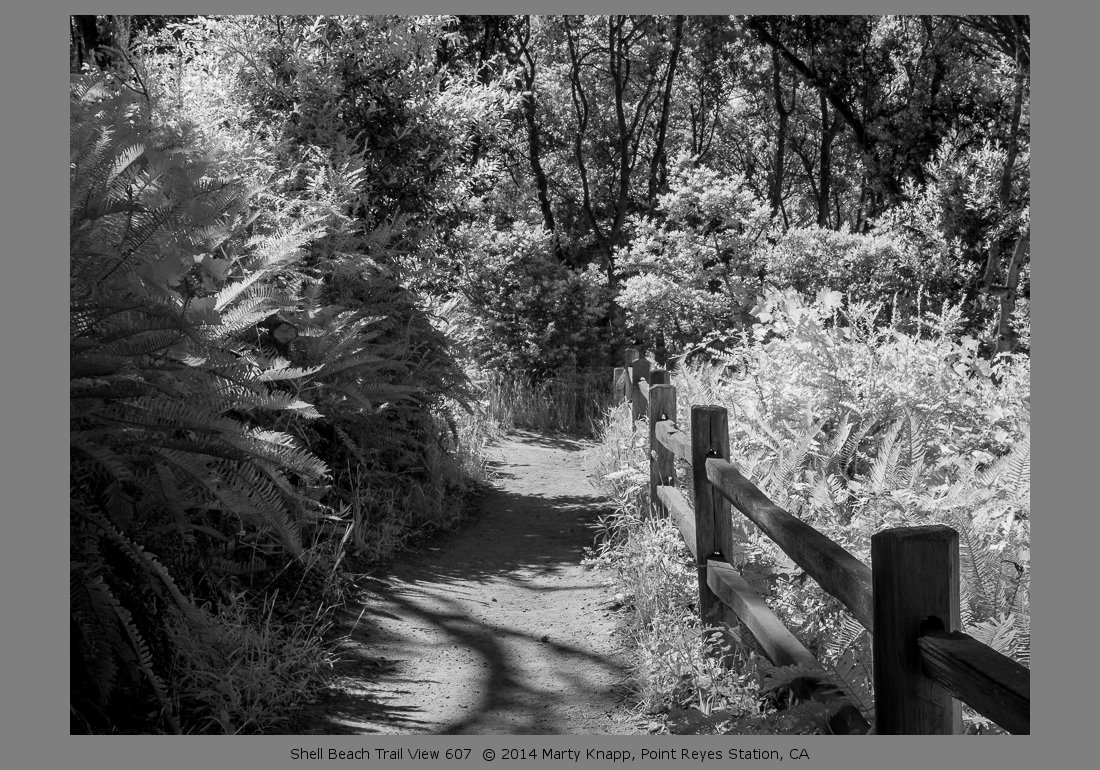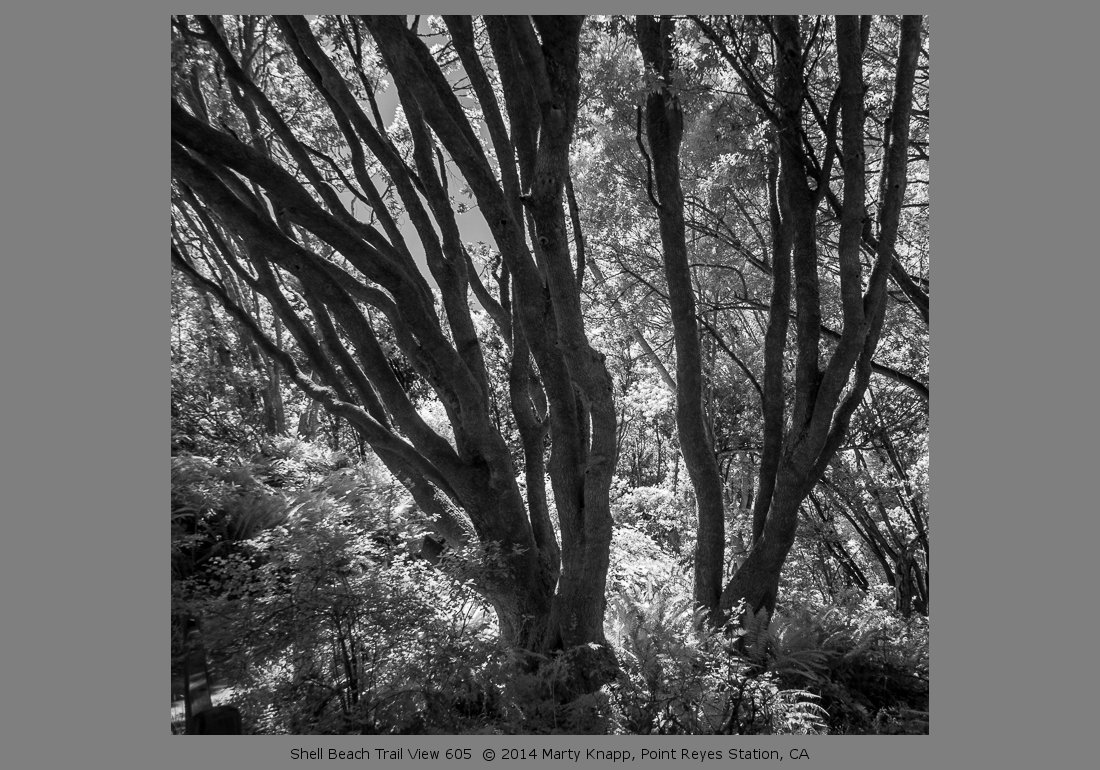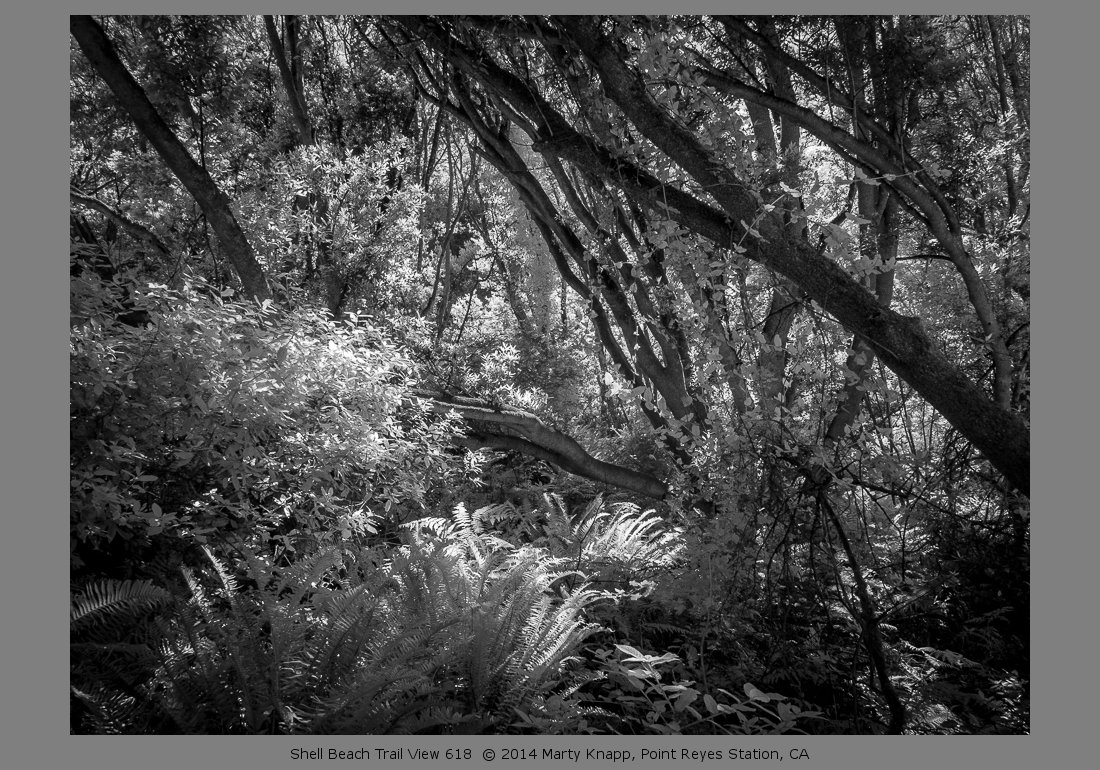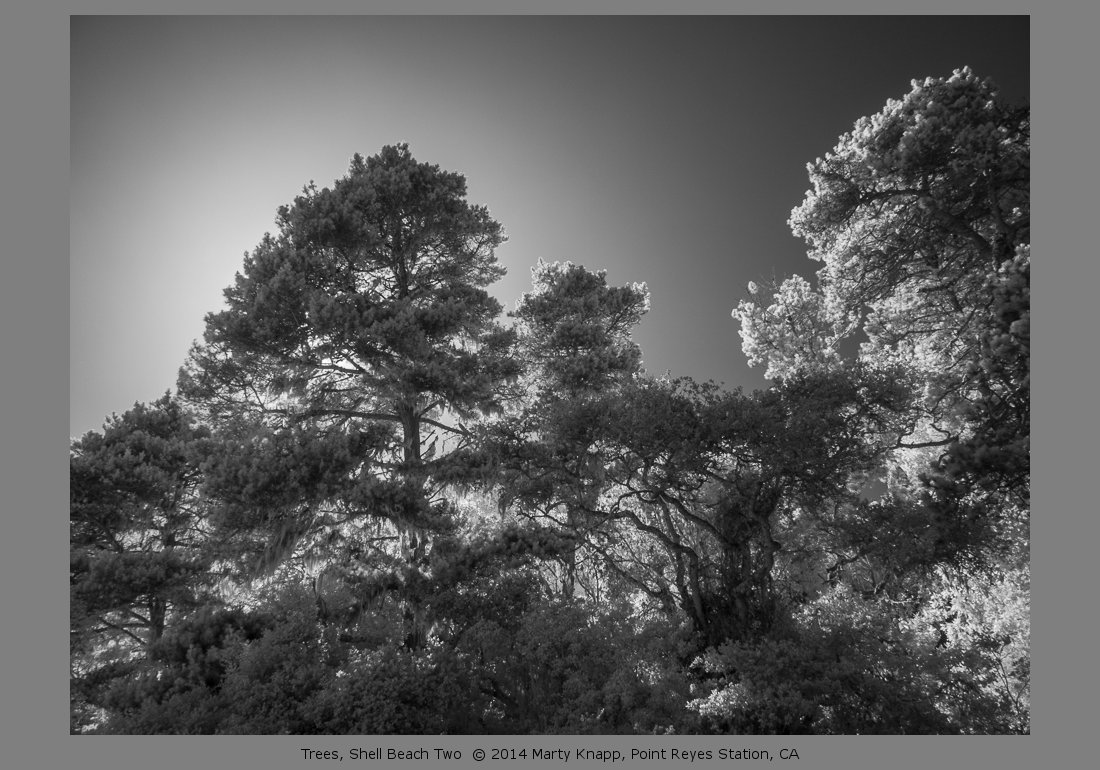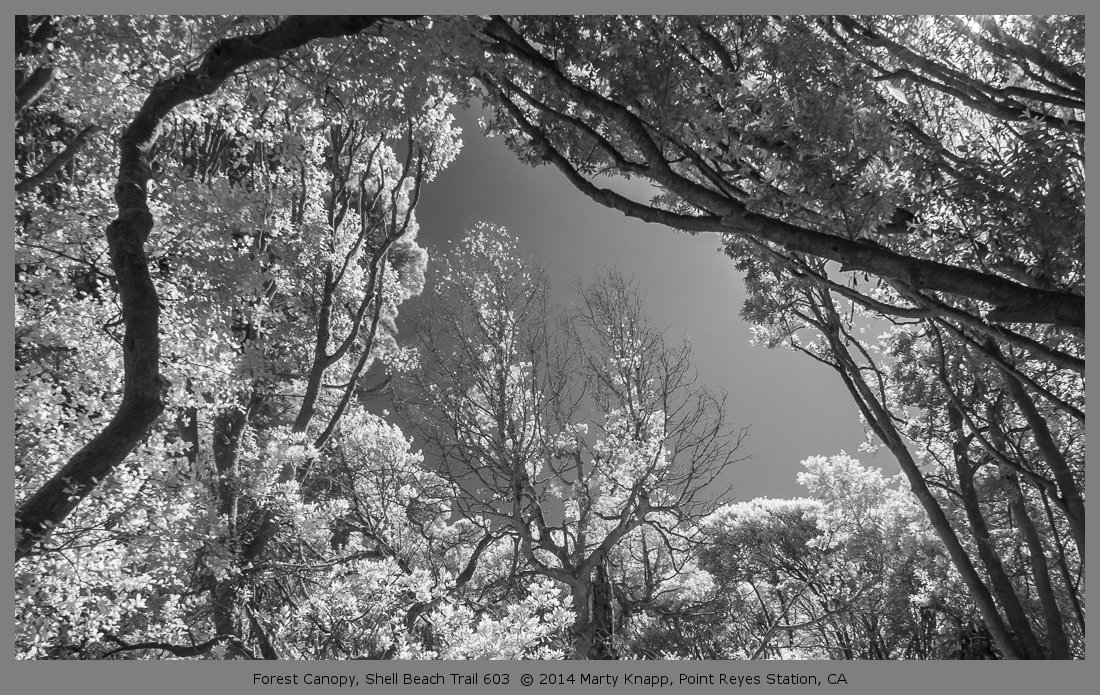Twenty-five years ago this month I stood behind my tripod-mounted camera on a rock outcropping near Mount Vision on the Inverness Ridge. As I gazed to the east, a spectacular full moon rose above the knuckle-like creases of Black Mountain. In the valley, a thick luminous fog rose, gradually swallowing the mountain’s sensual folds.
This was the second consecutive evening that I had ventured to that high ridge in search of a magical moonrise photograph. On the first evening my timing was wrong, but I ended up witnessing and photographing a spectacular sunset before leaving the mountain. My return to Mt. Vision the next evening almost didn’t happen, but somehow I managed to make it to the top. It turned out to be one of the most memorable of many photographic adventures I’ve had in the Point Reyes National Seashore. I commemorated these two evenings in my book, Point Reyes 20 Years. Here are the essays I wrote about the making of Pacific Sunset and Mount Vision Moonrise. These two photographs are forever connected and etched in my heart and mind.
Pacific Sunset, September 1989
From atop the Inverness Ridge on Mount Vision, you can look into two worlds—westward to the calm esteros that spill past rocky headlands to the Pacific Ocean, or to the east where you’ll see the fat knuckles of Black Mountain protecting the Olema Valley.
On a late November day in 1989, I went to Mount Vision to photograph the full moon. I hiked the trail north to the overlook from where I’d photographed Snow on Black Mountain. The sun had not yet set as I scanned the eastern horizon for the predicted location of the moonrise. As my eyes adjusted to the still bright sky, I saw that the moon was already up; its ghostly form was disappointingly high above Black Mountain. By the time the sky darkened enough for a good photograph, the moon would be hopelessly out of my composition. My shoulders slumped. I sighed audibly and then packed my equipment to trek back up the trail. I loaded everything into the van, and slowly drove out from the trailhead parking area.
To the west, a fiery sun was poised above a bank of Pacific fog, illuminating it and the icy cirrus clouds above it. I pulled over abruptly, as there were only minut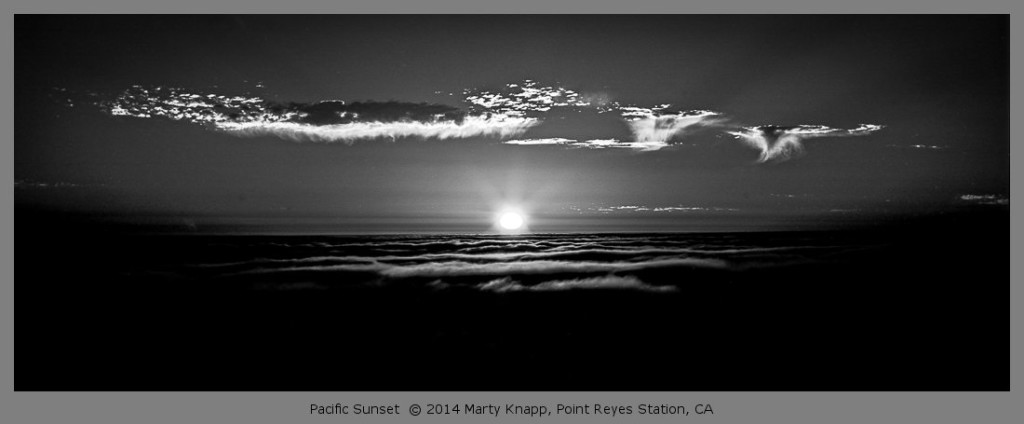 es left before the sun would plunge into the sea. Abandoning my custom of measuring the light with my spotmeter, I made a wild guess at exposure and took several frames of this remarkable scene. The result is Pacific Sunset from Mount Vision.
es left before the sun would plunge into the sea. Abandoning my custom of measuring the light with my spotmeter, I made a wild guess at exposure and took several frames of this remarkable scene. The result is Pacific Sunset from Mount Vision.
As I left the mountain that evening, I knew that I’d return the next night to try to shoot the moon again, but I could not have imagined in my wildest dreams what an incredible sight the next moonrise would be.
Mount Vision Moonrise, September 1989
As I loaded my car the next evening, I felt discouraged about my chances of making a worthwhile moon photograph. A heavy wet fog had settled into the valley where I lived. Pulling onto the highway, I had to switch on my windshield wipers in order to see, and the fog thickened rapidly as I drove up the mountain road. Halfway to the summit, I considered turning the van around and returning to the warmth of my cabin. But something kept me going up the mountain—the fog so dense now I had to put the wipers on high.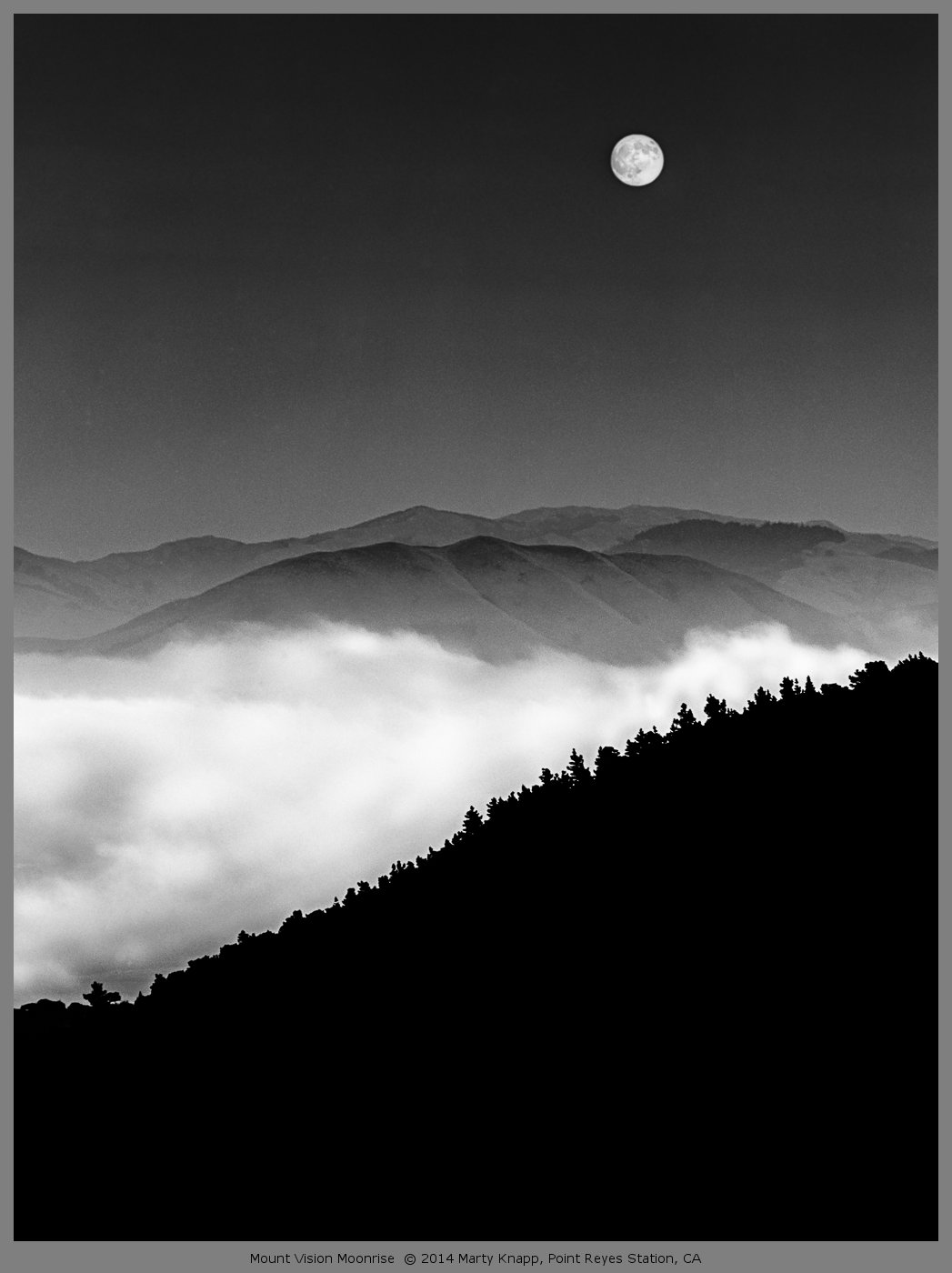
I was nearly to the top of the ridge with about 100 feet of elevation to go, when it happened. I drove right out of the fog. The darkening sky was clear, and a radiant full moon rose directly above Black Mountain. My heart quickened. And although I didn’t think about this until later, the very fog that had seemed my enemy became a generous partner. The moon shone brightly and magically. Below the mountain, a blanket of luminous fog filled the valley.


